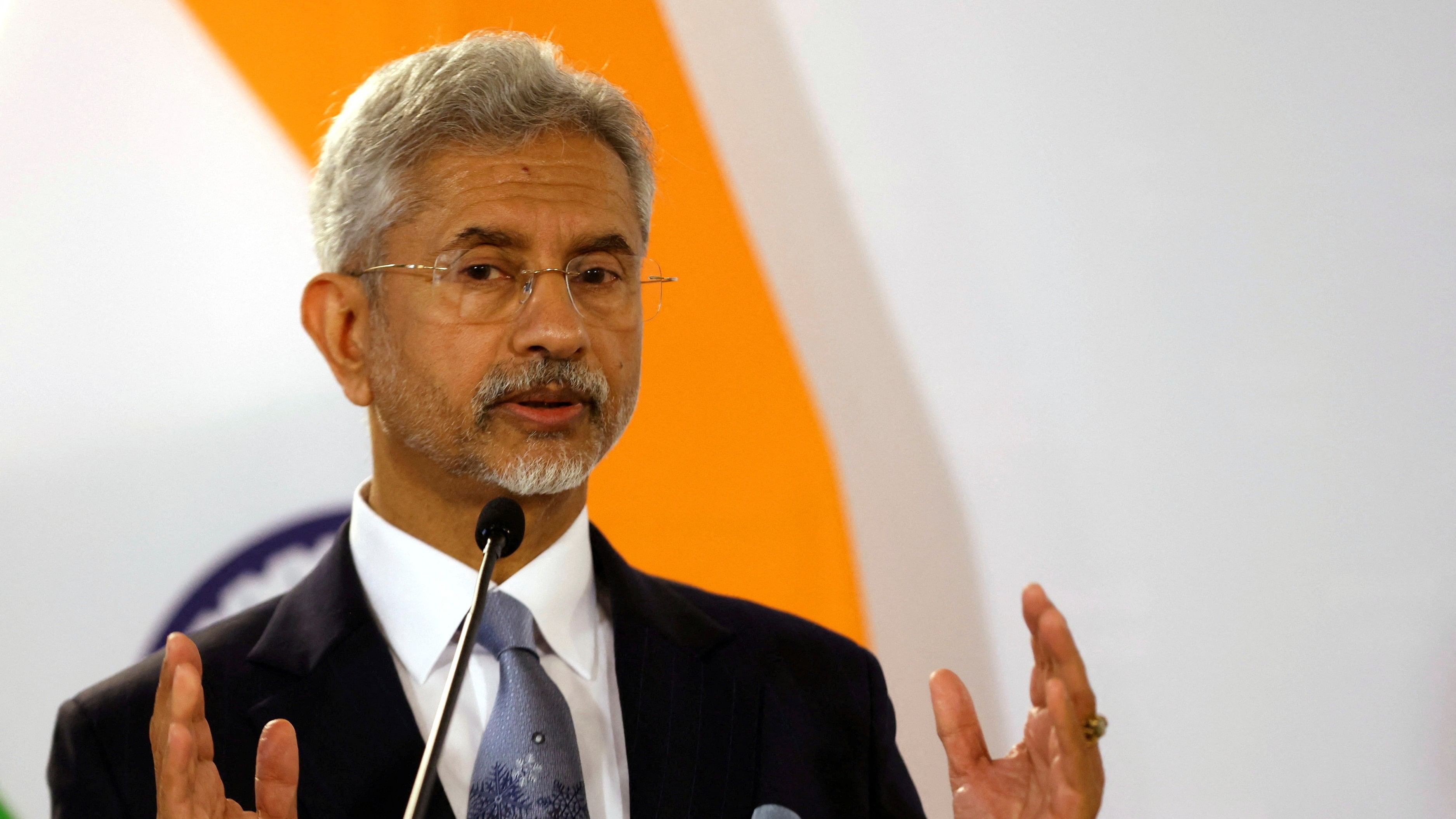
External Affairs Minister S Jaishankar.
Credit: Reuters File Photo
After China issued a new map showing Arunachal Pradesh and Aksai Chin within its own territory, India on Tuesday dismissed the neighbouring communist country’s claims as ‘absurd’.
New Delhi lodged a strong protest with Beijing through diplomatic channels over the 2023 ‘standard map’ of China that laid claim to India's territory.
“It's an old habit of theirs,” External Affairs Minister S Jaishankar said, reacting to the new map showing India’s territories as part of China. “These (territories) are very much part of India. This government is very clear (about) what our territories are. Making absurd claims doesn't make others territories yours,” he told news channel NDTV.
The Ministry of Natural Resources of the communist country’s government released the “2023 edition of the standard map of China”. The map is in sync with China’s expansive territorial claims not only along its disputed boundary with India in the Himalayas but also in the South China Sea as well as on Taiwan.
“We reject these claims as they have no basis. Such steps by the Chinese side only complicate the resolution of the boundary question,” Arindam Bagchi, the spokesperson of the Ministry of External Affairs (MEA), said, reacting to the maps issued by China.
Beijing claims almost the entire state of Arunachal Pradesh (over 80,000 sq km of area) as Chinese territory and calls it Zangnan or south Tibet. India claims that China is illegally occupying about 38,000 sq km of its territory in Aksai Chin, which borders eastern Ladakh. China claims nearly 2,000 sq km of land in Himachal Pradesh and Uttarakhand.
New Delhi also claims that Pakistan illegally ceded about 5,180 sq km of India’s territory to China in 1963.
Apart from showing the territories of India as their own or disputed in the official maps, China has been resorting to several other ways to assert its claims on these regions — be it by assigning Chinese and Tibetan names to areas, or by issuing stapled visas to people from Arunachal Pradesh, Ladakh and Jammu and Kashmir and thus avoiding recognising them as citizens of India.
China’s move to reassert its claims on Arunachal Pradesh and Aksai Chin came less than a week after the leaders of the two nations had a conversation on the sideline of the BRICS summit at Johannesburg in South Africa. After the meeting, New Delhi claimed that Prime Minister Narendra Modi and Chinese President Xi Jinping had agreed to direct relevant officials to step up efforts for expeditious disengagement of frontline troops from the remaining face-off points along the Line of Actual Control (LAC) in order to completely end the more-than-three-year-long military stand-off in eastern Ladakh.
Beijing also issued a statement, quoting Xi telling Modi that China and India should bear in mind the overall interests of their bilateral relations and handle properly the border issue so as to jointly safeguard peace and tranquillity in the border region. The statement issued by China, however, had no reference of the two leaders agreeing to expedite the complete resolution of the dispute.
Xi is one of the foreign leaders Modi is expected to host during the 18th G20 summit in New Delhi next week.
